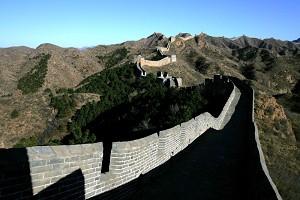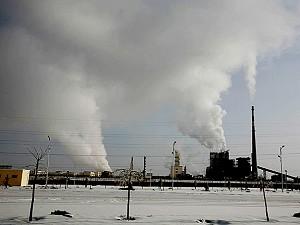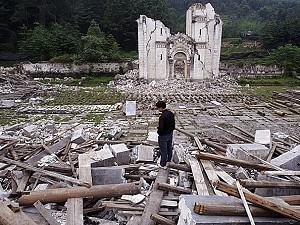TAIPEI—One section of the Chu Great Wall in Henan Province, on the border of Ye County in Pingdingshan City and Fangcheng County in Nanyang City, was destroyed in the name of afforesting barren mountains.
According to a report on Henan’s Dahe website, the destroyed relics of the Chu Great Wall, about two kilometers long, lies near Xiaolianggou Village, in Ye’s Xindian Town. The relics are also known as the Earth Dragon, whose major part has been damaged.
The villagers said that this part of the barren hills had been contracted to a contractor for afforestation. To plant trees, heavy-duty equipment and machinery such as large-scale excavators, were used this spring. The Chu Great Wall, the oldest section of the Great wall built by Chu Kingdom during the Spring and Autumn Period (770-476 B.C.), was ripped apart. The Great Wall relics, which previously had harmoniously integrated into surrounding hills and slopes, were fragmented.
Villagers said that the ancient relics site had been a comparatively well-preserved section of the Chu Great Wall. In surprisingly good shape, the wall had wound through Ye and Fangcheng counties. Last year when an investigation team was sent to the Chu Great Wall by the county authorities, the winding “Earth Dragon” was broadcasted on TV. “But now the relics were torn apart. What a pity!” the villagers sighed.
According to head of Ye’s cultural heritage administrative department, last April, Cheng Dalin, president of China’s Great Wall Research Society, investigated part of the Chu Great Wall bordering several hills in the town of Xindian. Cheng Dalin has believed this section to be a historical and well-preserved section of the Chu Great Wall, which was thought to have been built and used no later than the Warring States Period.
Cheng Dalin pointed out that the Chu Great Wall relics were distinguished by three features. First, construction materials were used from local sources. If there was earth, earth was used to construct the wall; when there was no soil, stones were stacked up. Second, earth and stones on the southern side of the wall were dug up to construct a wall along the steep northern side of the hills so as to strengthen the boldness and abruptness on the northern side. Third, a wall would be constructed along the site that allowed people to pass through, while no wall was built along the dangerously steep sites, such as trenches and cliffs. The three features accord with the description in Shui Jing Zhu [1], a work on the ancient geography of China. The destroyed “Earth Dragon” happened to be the part of the Great Wall recognized by Cheng Dalin as the Chu Great Wall relics.
The head of the cultural relics department revealed that a staff member in a hospital in the county of Ye contracted the construction along the hills.
Wang Gui, secretary of village Party branch in Xiaolianggou, explained why the cultural relics were ruined. Previously, local residents had only known it as “an earth dragon.” The investigation team from the county authorities recognized it as one section of the ancient Great Wall, but no landmark or sign was erected to claim the relics were cultural and historical sites under protection of counties. As a result, damage caused by the construction to the relics was not promptly stopped.
The Chu Great Wall relics meander through Pingdingshan for hundreds of kilometers. But most of the relics have not been claimed by any preservation group and have been in a poor state of preservation.
According to the Dahe’s report, in mid-May, the cultural heritage administrative department in the county of Ye applied the Chu Great Wall in its local region for being a historical and cultural heritage site under protection of counties, and now expects the application approval.
The cultural heritage administrative department has also reported the destruction of the Chu Great Wall to the Henan Cultural Relics Bureau. Meanwhile, an examination process for approval procedures has been launched by Provincial Cultural Relic Bureau.
Note: [1] Shui Jing Zhu (Commentary on the Waterways Classic) is a work on the ancient geography of China, written by Li Daoyuan in the Northern Wei Dynasty (386-534). This Book describes the waterways of ancient China. Additionally, it presents many aspects of the localities without becoming fictionalized.




